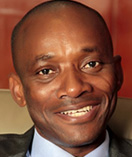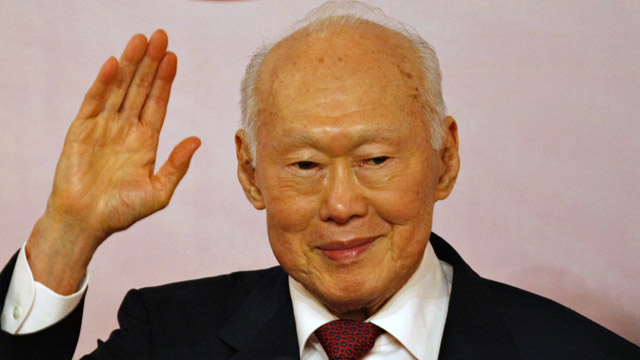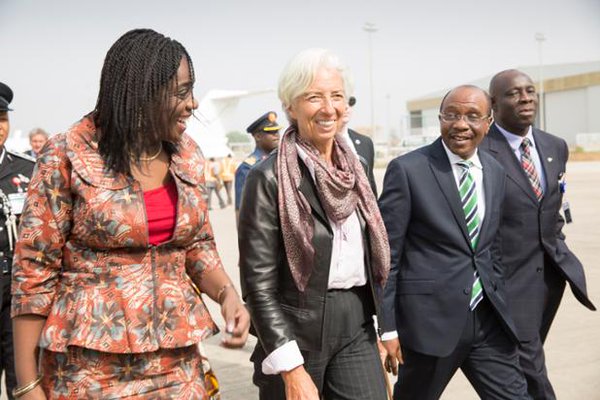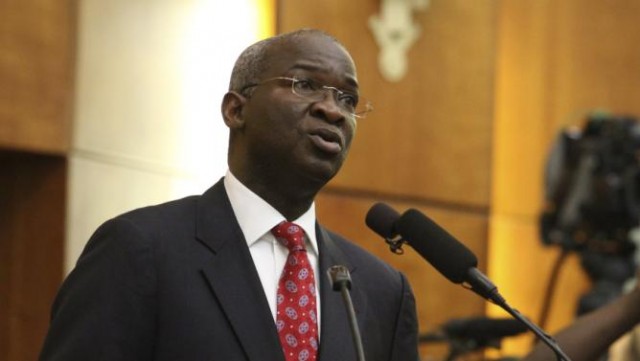The search for effective leadership should be a prime occupation in these days of tragedies and failures in the world. Some year ago, TIME magazine carried a report on leadership in the world. The report lamented that the leadership shoe was oversize and there were not many contemporaries then who could fit into the shoe. The report ended on a wishful note: could we have more leaders. Today, we say the same thing: where are the leaders?
It is a sad thing that when leadership is absent the problems that require leadership increase. The world never lacks problems that require leadership. There is no respite from the challenges that require leadership. Toda, the world is rolling on a slippery slope towards disaster. Many people are terrified of the consequence of the combination of new nihilism and exuberant incompetence in the face of severe economic and political crisis. The hollowness of the twitter-driving US Presidential campaign reinforces the fear of perdition. It is at times like this that the need for leadership becomes more acute. We need leadership to restore peace and stability to the Middle East, to stop the senseless and chilling deaths by religious fundamentalists. We need leadership to destroy poverty and connect Africa and the rest of the underdeveloped southern hemisphere to the wagon of economic growth and social development. More poignantly in Nigeria today, we need leadership to overcome the challenges of poverty, disease, corruption and political instability. Such leadership will help us to turn the corner and become a respected continent of prosperity, freedom and peace. Great leadership will reverse the social plagues that threaten to decimate the human capital of the West Africa region and make it one of the world’s poorest and most miserable acreage.
We have seen instances of good leadership helping to overcome some difficult challenges in our history. The management of the Ebola virus by federal and state governments in Nigeria is one example of effective leadership. We saw public institutions rise up to the challenge with compassion and commitment. The Minister of Health and his team cut the image of chief executive officers working a tight schedule to steer the organization clear of a present and real danger. They were proactive and pragmatic in their containment strategy. State governor and state Commissioners of Health worked closely and harmoniously with intervention agencies to detect, isolate and treat victims of the virus and avert it turning into a pandemic.
Why is leadership so important? What do leaders do? Leaders create new and better conditions. They solve problems, problems that matter to the people. Leadership matters because it creates the consciousness and mobilizes resources to achieve desirable outcomes. Leadership matters because problems have to be solved. And someone has to organize the society to solve its pressing problems.
Advertisement
Ultimately, the responsibility of a leader is to create something good and valuable or to sustain the creation of some good or service. Leadership is a creative enterprise. The responsibility of a leader may be to create truth from falsehood. Many of the world’s renowned religious leaders and moral saints have done this. The responsibility of a leader may be to create wealth from poverty. Lee Kuan Yew did that with the transformation of Singapore. The past leaders of China, Brazil and India, to a large extent, did that. The responsibility of a leader may be to create health from sickness, hope and confidence from hopelessness and despair. Howsoever, the responsibility of a leader is to create a new or better reality, to transform situations from negative to positive, from a lower level of excellence to a higher level of excellence.
Those who occupy leadership positions but cannot create something new and better are not leaders. Note that I have not said good or bad leadership. This is because leadership is inherently positive. Can we have bad leaders? Well, we can only have failed leaders. A bad leader in the sense of a person who produces bad results in the exercise of political, bureaucratic or spiritual authority, is a failed leader. As James MacGregor Burns puts it, leadership is both a descriptive and prescriptive word that embodies a moral dimension. “Bad leadership implies no leadership”.
The challenge of leadership is therefore to change our world. ‘Our world’ may be our community, organization, country or the universe. What we are asked to change may be its social values, social behavior, social structure or outputs and products. Take the care of any health challenge like Lassa Fever or Zika Virus. We need effective response in terms of public health policies, public enlightenment, intervention to contain the spread and clinical actions to cure and care for the victims of the virus. Above all, we need coordinated research to discover drugs that can save those afflicted by the virus. Now this presents an interesting landscape to consider the leadership as creative enterprises. It cuts across spheres of influence. Political leaders have to set up a policy and administrative framework for effective social and clinical action. They have responsibility to create an environment- legal, policy and fiscal- that orchestrates and optimizes other actions. Community leaders have to support political leaders to create new personal and social habits that reinforce effective containment of the virus. Medical leaders have to work hard to create the drugs that can overcome the Ebola virus. These leadership responsibilities can be exercised locally, nationally and internationally.
Advertisement
What do leaders create? They create values, relationships, institutions, processes and products that promote the human good. How do we define the ‘human good’? The US Constitution and the Declaration of Independence have audaciously defined the ‘human good’ as ‘life, liberty and the pursuit of happiness’. Leadership as a creative enterprise focuses on the creation of arrangements that promote life, liberty and happiness for the people. What are the intricacies and dynamics of the exercise of leadership as creativity?
I find the account of the creation of the world in Genesis unsurpassed in its lucidity and practicality. There are many approaches to understanding Genesis as a religious text. Because of its grand theory of the beginning of life and the cosmos it provokes strong reactions. Some consider the text inerrant. It is divine and its account of the origin of life is more authoritative than scientific theory. Others dispute the historicity of the events in the Genesis story and conclude that it is basically allegorical like other creation myths. As a Christian, I take the view that although the Genesis account is not science it is true in its relevant material particulars. But whichever view we take on the historicity of the account, its portrayal of leadership as creativity is, in my view, unsurpassed.
Leadership as Creativity is Visionary
Leadership as creativity requires a vision. Leaders always create the future from a model which they have conceived. They have the idea of the end-state. They create from a clear and compelling vision. The Genesis account of creation shows God as having decided what he wanted to create before he made the famous declaration, “Let there be light”. Leaders are persons of vision. The first requirement of creative leadership is that the leader knows where he is going. No one has created a thing without knowing what he wanted to create, except it is a freak. Leaders may not get exactly what they want. But they know what they want. No body ought to follow a leader who does not have a clear idea of where his society or organization should go.
Advertisement
Now, there is a caveat. A leader needs not be an all-knowing demigod. He does not need to have the best intellect. He may need to source the vision of the future from his associates and even antagonists. Even when it is other people’s vision and model that the leader is implementing, he must be fully convinced that it is what he wants to achieve. A leader should not be halfhearted about his enterprise. He must be committed and passionate to achieve the vision he has accepted. A leader as a creator knows what he wants and imposes his idea on the canvas. He may get the idea from others howsoever. It does not matter. What matters is that he has accepted the idea. Then he has to realize the idea in spite of difficulties.
God knew he wanted light. And he decreed that there must be light. How does the idea of certainty line up with democracy and its consultative process? A leader does not need to have all the information about how to change society and create better outcomes. So he needs to engage with different stakeholders. A modern democratic leader must be able to consult to achieve consensus on the agenda for change. But he owes the responsibility to decide and commit to change. He must be fully convinced that he wants that change, and be determined to achieve it. The rest of politics is about getting people behind that vision of change.
Leadership as Creativity is Willful
We all like humble and self- effacing leaders. Jesus Christ gave us the idea of the servant leader which Robert Greenleaf popularized in leadership literature. Yes, leaders have to be humble to be effective. But leadership must be willful. That means that the leader must be authoritative. He has to believe passionately in the ideas of change that he is championing that he has to refuse to be deflected from the course of realizing them. Leaders are not cut for easy compromise, except it is only about less significant issues of tactics or procedures. They never bargain away core values and ideas. This is why leadership is unrelenting and stubborn.
Advertisement
Jim Collin has described the highest level of leadership (level 5) as paradoxically embodying personal humility and fierce resolve. Great leaders are a “a study in duality: modest and willful, shy and fearless”. The notion of willfulness is central to the capacity of these leaders to life the concept from the drawing board and build it in stones and concretes. They insistent and determined, even as they open themselves to varied opinions and views as to how best to realize their vision. Being willful does not mean irreversibility. Because willful leaders are still humble and pragmatic to listen for feedbacks and constructive criticisms, they can change their idea and conception. They reverse when there is a compelling need. But once they decide on a course and there is not course for review they execute with unrelenting and incandescent resolve.
The idea of willfulness is that leaders are motivated and self- initiating. They are not waiting for the passion from others to knock them towards a mission. They initiate change. They act. They build the momentum and the ride it. They are proactive and insists on achieving the change they desire.
Advertisement
Leadership as Creative as a Process
The book of Genesis also shows that leadership as creativity entails a good understanding and management of process. The distance between the unpleasant reality and the desirable outcome is process. At independence many African countries enunciated great vision of the future. This vision failed largely because they failed to engage a clear process that could translate expectation to reality.
Advertisement
Professors Ann and Bob Seidman have argued pointedly that the crisis of development in Africa arises from the failure of well-meaning post-colonial leaders to change the institutions that constituted their underdevelopment. In a memorable phrase they argue that these leaders were involved in a fatal race with these problematic institutions. Either they changed the institutions or the institutions changed them. In the end, the institutions won and changed these well-meaning revolutionaries into incompetent despots. In essence, it is the failure to manage process that caused the failure of development in Africa.
Imagine what Africa could have been if those patriots who founded the republics in Africa had paid closer attention to the process of making their countries truly politically and economically independent. Think about what a different continent we could have had if these founding leaders re-engineered the institutions to align with the bold and positive visions they had enunciated. The problem is: they failed to pay attention to the details and dynamics of the development crises their countries faced. They just recognized that their countries faced crises but did not wait to map out clearly the many ways these crises manifested and how they constituted the system of underdevelopment.
Advertisement
Think about Nigeria. At independence it was hailed by the world as a redeemer of the African hope of greatness. The Time Magazine of October 1960 heralded Nigeria’s independence with a categorical statement that Nigeria will be a great country. Post-colonial Nigerian leaders also committed themselves to a grand vision of greatness. But five decades after we are yet to realize the promise of our birth. Nigeria is struggling with ancient contradictions unable to redirect itself to the path of greatness.
Nigerian problem is largely a failure of process. Nigerian founding leaders just recognized their country faced crisis and determined to overcome the crisis. They recognized the incipient ethnic rivalry and religious conflict and promised themselves that they would build a country where no man or woman is oppressed, where neither tribe or religion would matter; but every citizen would be treated equally. But they did not stop to understand how ethnicity and religious intolerance was manifesting. They did not think clearly about the evident conflict between their inherited cultures and institutions and the new political and economic institutions they are dreaming about. They just presumed and believed. They had rosy vision about the future of their beloved new country. But they did not pay the price of thinking through the process.
Yes, God said let there be light. That was not enough. He also said “Let there be an expanse in the midst of the waters, and let it separate the waters from the waters” (Gen. 1 verse 6). That is process. Leaders enunciate a vision and then get down to working out the vision. God’s ultimate vision was to create an inhabitable universe for man to live and flourish. He recognized the obstacles on the way of that grand vision. He stated with light and moved on to separate the waters and then gathered the waters in one place and dry land emerged. So, we have waters and dry lands which make life one earth sustainable.
In all the countries or societies where leaders worked hard to create prosperity out of poverty; peace from conflict and happiness from distress, we see leaders who succeeded in the management of process. The management of process is the real heart of transformative leadership, whether in a democratic or authoritarian setting. We can argue that the debate about whether it is democracy or authoritarian regimes that best promote development is no longer relevant. We don’t have to vote between China and India. If china is doing better than India it is because democracy hobbles India or that authoritarianism unleashes China. It could be that the leaders in China are better managers of the process of change. If Ethiopia better implements reform than Nigeria and Ghana, it could be because the leaders have a better grips of the process of change in that country.
The grail of execution is keeping an eye on process. The reason large scale and real change is difficult in an organization or society is because it is really difficult to map out correctly how various incentives, actions and procedures interact with one another to create the problematic situation or behavior that needs to change. If leaders don’t understand this intricate system then they are probably groping in the dark in the change mission, no matter how passionate. If leaders design policies to respond to a problem that they don’t fully understand, whether they hit the bull’s eye become guesswork, a strike in the dark.
Leadership as creativity requires that we start from a compelling and positive vision. Then we act willfully to realize the vision. And in acting willfully we keep our eyes on the many processes that define the problem and determine the solution. Leadership as creativity means being as detailed and pragmatic as possible. If we are solving real problems then we have focus on the real, not imaginary, situation. Leadership as creativity is also about management of attention. We start with strategic vision we scan and scope and finally select which outcome or value to pursue. That is visioning. We then put the lens of operations to see the way towards the goal and design a roadmap. We move from high level vision to more much focused attention to process. The final stage in leadership-execution matrix is the tactical. At this stage attention is focused on the minutest details as we swift into delivery of roadmap.
From visioning to implementing, leadership as creativity is all about effective management of attention: from vision to plan to implementation; from strategy to operation to tactics.
Amadi is immediate past chairman/CEO of Nigerian Electricity Regulatory Commission (NERC)
Views expressed by contributors are strictly personal and not of TheCable.






